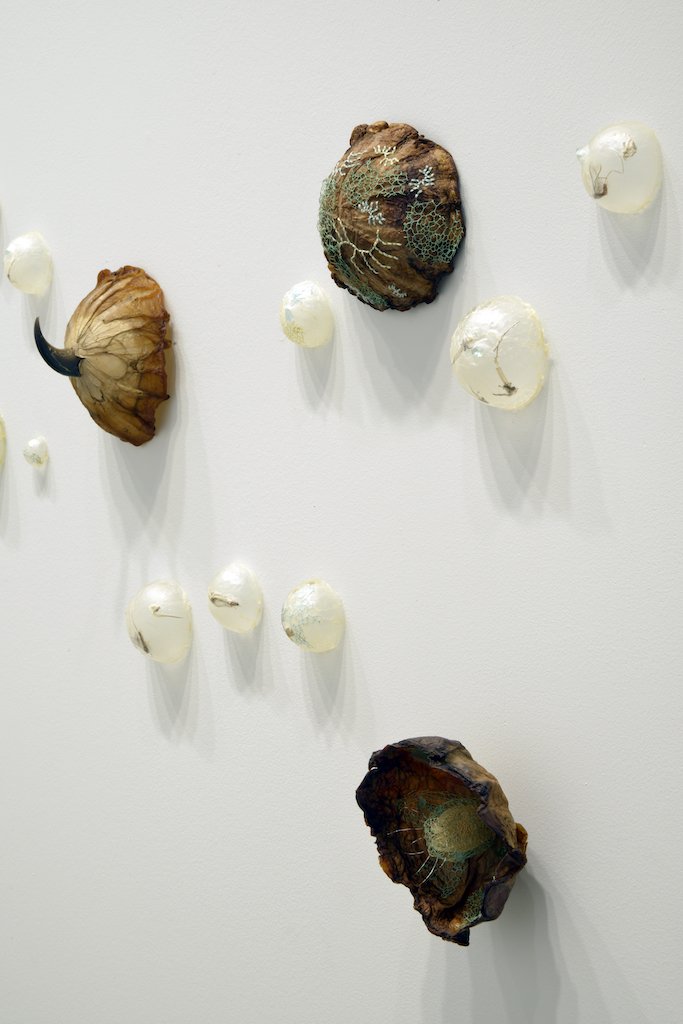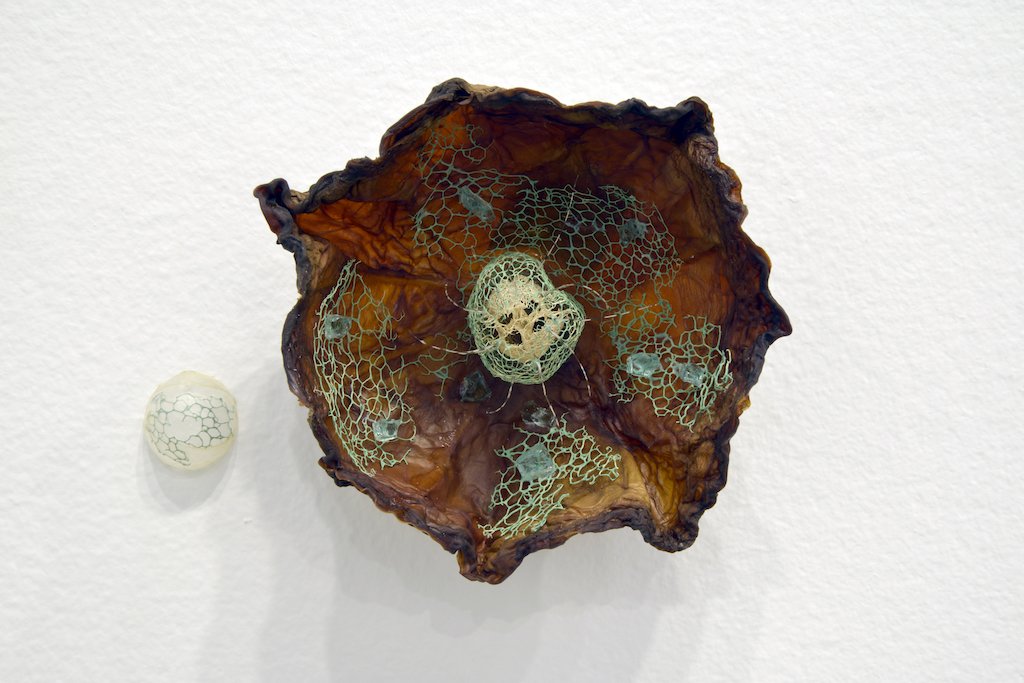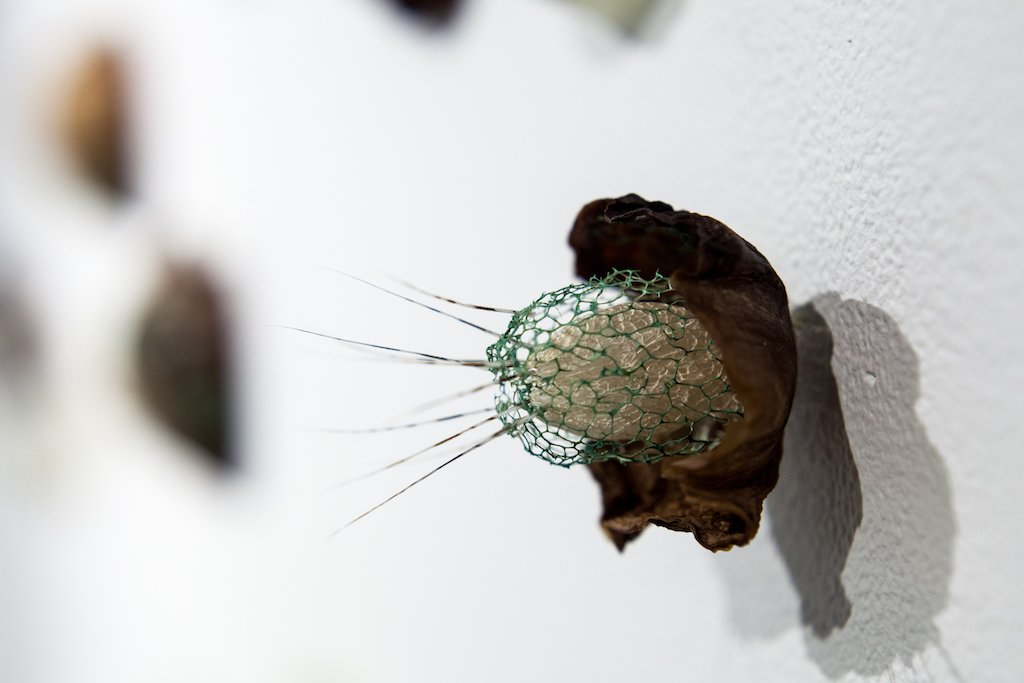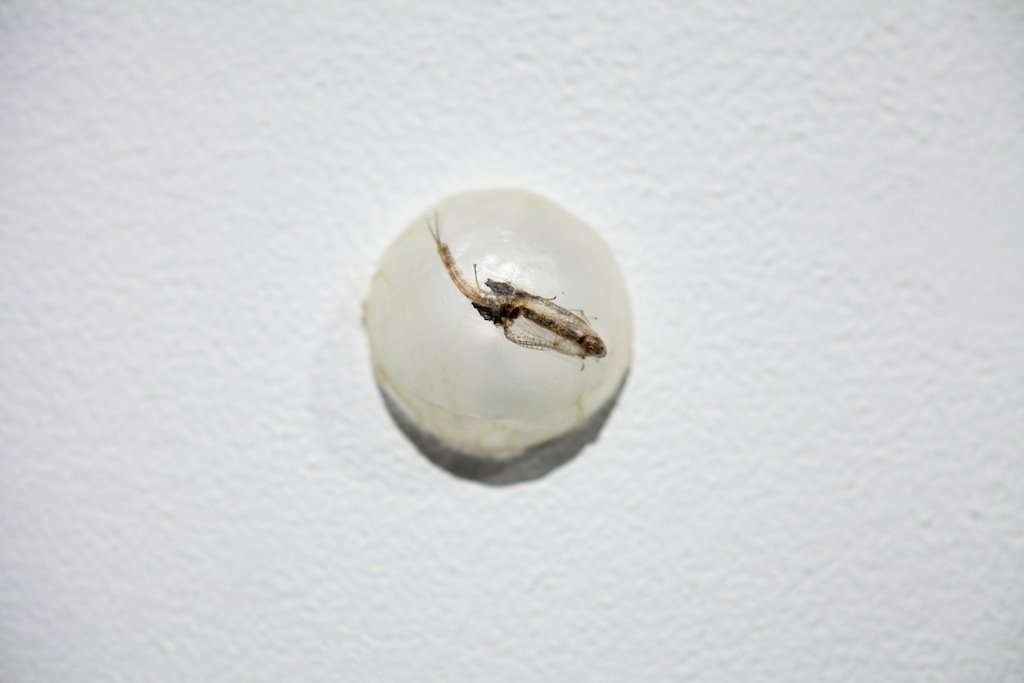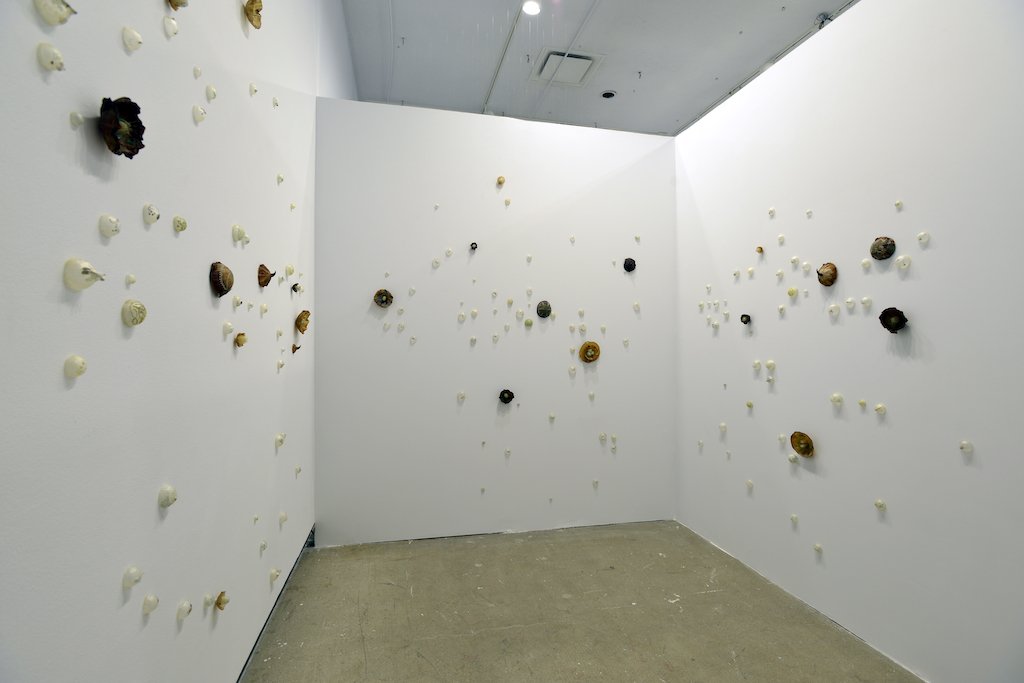
Free-floating
Scobys (Symbiotic culture of bacteria and yeast), hog gut, fish flies, wild cucumbers and other materials
Variable dimensions
2019
Photo credit – Don Hall
Free-floating – Heather Komus
Free-floating explores symbiosis and other complex relationships and roles in ecosystems. I am fascinated by colonial marine animals like the Portuguese man o’ war and the graptolite (an extinct colonial marine animal that lived between 510 to 320 million years ago). The Portuguese man o’ war moves like a single creature (just as the graptolite did) but is composed of many individual organisms. I am also interested in symbiosis that takes place on a cellular level, as can be seen in lichen (a symbiotic relationship between a fungus and an algae).
The fishfly is a bioindicator species, their numbers indicating ecosystem health, as larvae can only live in very clean water. Lichen is also a bioindicator species and its disappearance in a forest may be linked to air quality. These organisms are prime examples of how the balance in an ecosystem can be tipped by problems like pollution and climate change.
To explore my interest in ecology, multicellular organisms and symbiosis I have dehydrated and embroidered scobys (a symbiotic culture of bacteria and yeast) with images of graptolites. I included adult fishflies, that only live for one day, alongside images of the extinct graptolite, to comment on the transitory nature of life. As a way to blur the lines between different species and our associations with those species I have created small sculptures that contain materials from four different forms of life: plants; animals; fungi and bacteria.
